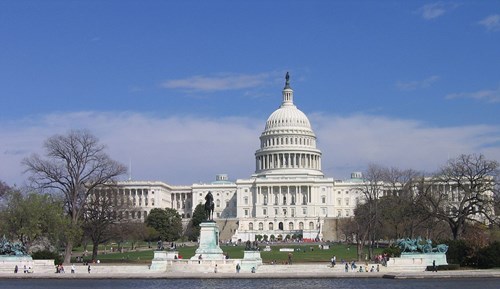Only a Collaborative Approach to Workforce Shortages Will Move the Needle
May 15, 2017
Like so many hurdles in Washington and around the country, identifying the problem isn't the hard part—it's finding the solution that takes time, collaboration and effort.
New research from the Rockefeller Foundation and Edelman is among the latest to demonstrate what has come to be a widely accepted fact about the glaring disconnects in our country's workforce: 43 percent of employers agree that finding a sufficient number of qualified candidates is a top challenge when filling entry-level jobs, while more than 5.5 million young Americans ages 18-24 are neither working nor in school.
Recently, the reach and volume of conversation about the skills gap have been amplified by welcome indications that the Trump administration is interested in confronting this widespread issue.
U.S. business leaders met at the White House in March, alongside their German counterparts and Chancellor Angela Merkel, for a round-table discussion on vocational training, where President Trump stressed the need for workforce development programs. And last month, the White House summoned CEOs from leading industries for its second "Strategic and Policy Forum" to discuss issues including job creation, infrastructure and education.
Likewise, Education Secretary Betsy DeVos, in her confirmation hearing and subsequent public statements, has been supportive of tackling the skills gap. Speaking at community colleges and education conferences, DeVos has noted her interest in alternative pathways in our postsecondary education system as a means to address workforce shortages. In a potentially encouraging sign, she was asked to lead a breakout session at April's White House business leaders meeting that included IBM CEO Ginni Rometty and former GE CEO Jack Welch—although notably no educators.
These conversations are needed and an important step in the right direction, but the real problem is that they are too often happening in silos. This isn't solely a business problem or an education problem. A well-prepared workforce will only be realized when all voices are regularly at the table—policymakers, business leaders and educators.
It will take all stakeholders consistently bringing together concrete solutions to move the needle, hold these groups fully accountable and ensure work on this topic is more than just conversation.
Take for example, the 24 nonprofit career education schools I lead within Zenith Education Group. Based on feedback from our employer communities, in early 2016, Zenith unveiled a new curriculum for our medical assistant program—the kickoff of a robust curricula reform effort across our allied health programs to help ensure skills being taught in the classroom reflect the real-time needs of employers.
Our medical billing and coding curriculum is the latest to go through this process. Our team surveyed more than 100 employers to gather feedback on how to better align the curriculum with national certification exam standards and incorporate soft skills teaching to place students in real-life situations. Zenith has subsequently implemented a work-based online learning tool to improve job readiness by taking students through simulated procedures and patient interactions in office environments similar to those in which they can expect to work.
While this is perhaps a small example of the synergies and value of employer-educator partnerships, imagine what can be done on a large scale if lawmakers, business leaders and educators fully aligned.
Promising new provisions that would incentivize greater alignment between what employers are seeking, what current and future employees have to offer and what educational institutions are providing are included in new legislation introduced in the House of Representatives. The Strengthening Career and Technical Education for the 21st Century Act aims to reauthorize the Carl D. Perkins Career and Technical Education Act, which provides federal support to state and local career and technical education.
The legislation seeks to bring together the key stakeholders needed to help solve the skills gap and includes new sections to support innovation among career and technical education. It promotes state- and local-level partnerships among business leaders and schools and provides flexibility to states to direct federal resources to programs focused on in-demand occupations on a local and state-by-state basis.
Using this legislation as a timely vehicle to pull conversations out of isolation, our country could make real strides in solving for our skills gap by educating and retaining students to meet growing industry demands. Doing so will help ensure our students are successful and competitive in today's job market. For their sake—and that of the country—Congress should move with speed to take up this new legislation for consideration and lay down a meaningful bridge to our country's skills gap.

